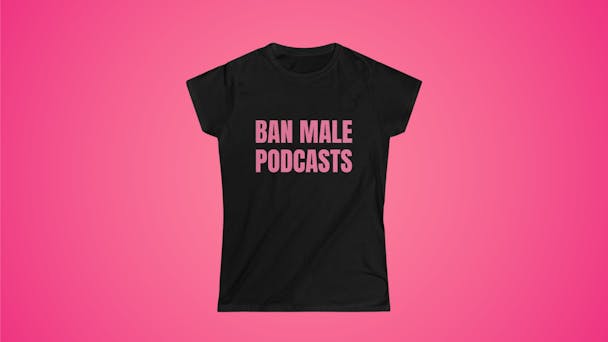Don't mistake GirlTok for GirlBritain. Nuance rarely goes viral
Social media reflects society, but it is not a one-to-one proxy. Don’t get lost in TikTok fads trying to understand the truth about women, warns BBH Labs’s Anna Fitzpatrick and Mara Dettmann.

As an industry, we either shit on feminine-focused viral moments as meaningless noise - or mistake them for culture at large. Both underserve women as a consumer audience. Online expressions of femininity are expansive, nuanced and varied. Creators talk about everything from the impact of tech on ‘choice feminism’ to what the ‘mob wife aesthetic’ might reveal about gender relations in Italy.
But nuance rarely makes headlines.
The moments that go viral are talkable because they’re polarizing. And they’re squeezed into trending soundbites (and even immortalized as merchandise) because they’re simple.

But polarizing and simple isn’t the problem.
The problem is how advertisers interpret what these moments tell us about our audiences.
1: Mistaking cultural signals for culture at large
Take one of the big online debates from last year: women are calling themselves ‘girls.’ Is it infantilizing or empowering?
Both sides miss the point.
‘Women’ at large aren’t calling themselves ‘girls.’ Some women, some men and some non-binary people on the internet are.
2: Deriding (or sh*tting on) viral moments as meaningless noise
Of course, there is some truth in this.
In Vox, Rebecca Jennings wrote about ‘trendbaiting’- people coining ‘new’ slang to go viral and make press headlines.
But even if these moments are fuelled by a desire for attention (and money) - they still tell us something about people. Bell hooks was as right in 1997 as she is today: “Whether we’re talking about race or gender or class, popular culture is where the learning is.”
So we looked back at the buzziest ways the internet talks about femininity. Two tonal themes dominated: ‘Delusional Detachment’ and ‘Female Rage.’ Both dripping with irony, of course.
Delusional Detachment
‘What do you mean I have to write this article? I’m literally just a girl.'
’Girl’ was undoubtedly the prefix of 2023 TikTok. A pastel-pink evolution of millennial ‘adulting’ memes, where viral moments like ‘Girl Math’ poked fun at the joy and chaos of having your head in the clouds.
This was all while the joking-but-not-joking call for ‘Lazy Girl Jobs’ taught us to Lean Out, not Lean In (sorry, Sheryl Sandberg). More recently, sad hamster memes have been doing the rounds - in which girly-coded rodents are overwhelmed by adult life.

But there is a self-aware subversiveness to hyper-femininity online, from creators using ‘for the girls’ language to explain complex topics to ‘tradwives’ who know exactly how to inflame onlookers to drive engagement and conversation.
In case you’re interested, it’s currently by making cereal from scratch.

On the other end of the spectrum, hell hath no fury like a woman scorned.
‘Female Rage’ has become its own content genre-spanning fiction, irony and (perhaps understandably)…sincerity.
From fan cam edits of Gone Girl antagonist Amy Dunne to compilations of Cassie from Euphoria screaming her lungs out - creators indulged in fictional depictions of ‘Female Rage.’ Take a look at the #femalerage hashtag on TikTok (53K posts and counting) for an archive of iconic women scorned in film - from Regina George to Kill Bill’s O-Ren Ishii.

Then there are the more flippant, ironic rage-epithets; like ‘Dump him, sis,’ ‘all men are trash,’ or ‘ban male podcasts.’ These bite-size generalizations are perfect for slapping on mugs or T-shirts - fuelling a mini ‘hate merch’ industry.
These contrasting expressions of femininity – from delusion to rage – don’t just reflect the polarizing effect of algorithms. They’re a critical reminder to brands and advertisers: ‘Women’ are not an audience. Because ‘women’ are not a monolith.
We’re certainly not a ‘community’, either. There’s about four bloody billion of us. And we’re full of flaws and contradictions.
Deep understanding takes work. To get there, remember these three things:
- Everything has meaning. Not everything matters to your brand.
- Nothing happens in isolation. Find out what’s driving it.
- Remember what you’re here for. To translate insight into inspiration.
So, let’s roll up our sleeves and get stuck in. To properly represent women (and any audience, really), we need to do away with lazy insights. Whether that be falsely presenting a trending hashtag like #GirlMath as a cultural shift or deriding it as nonsense.
This piece was co-authored by Fitzpatrick and Dettmann.

